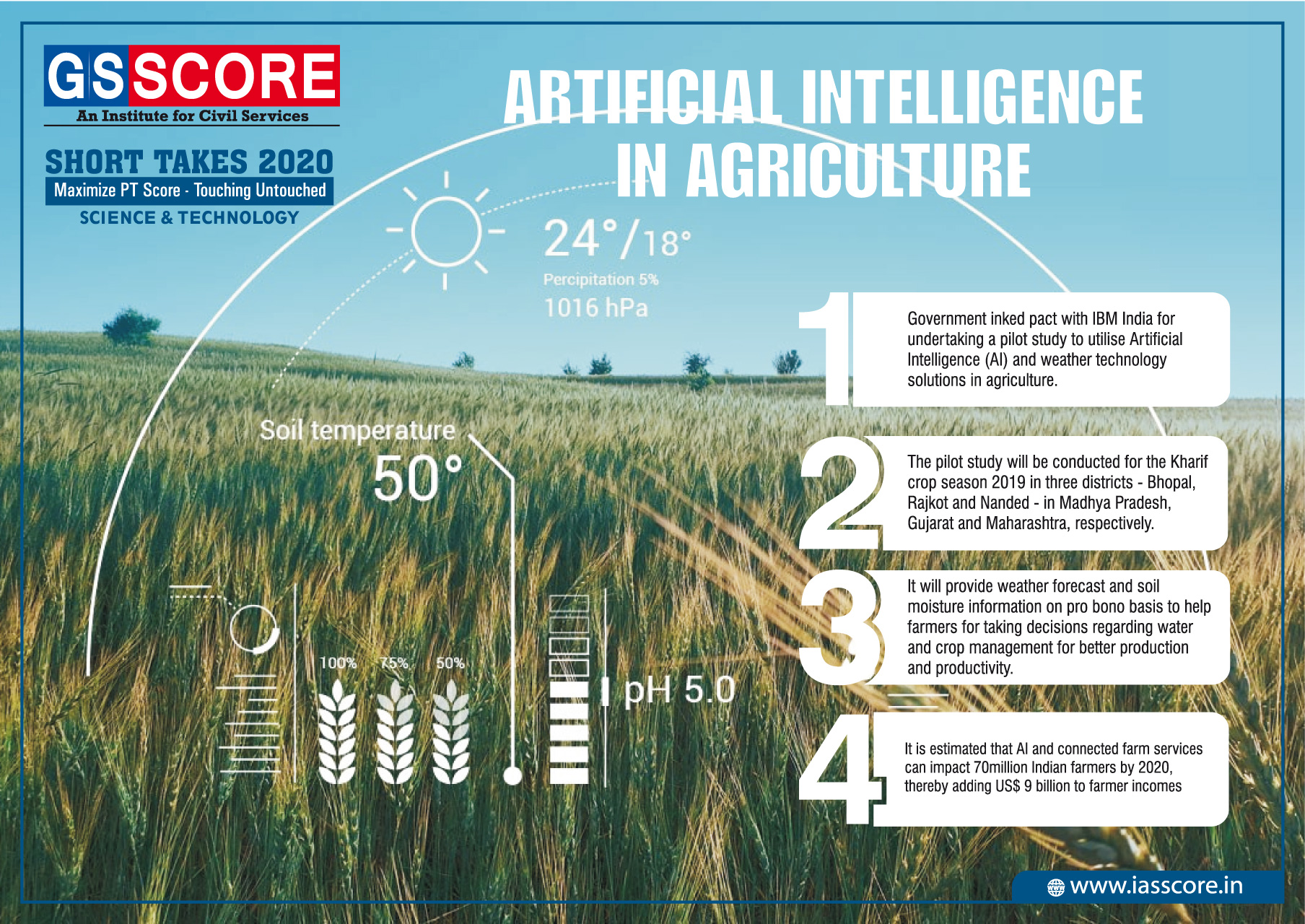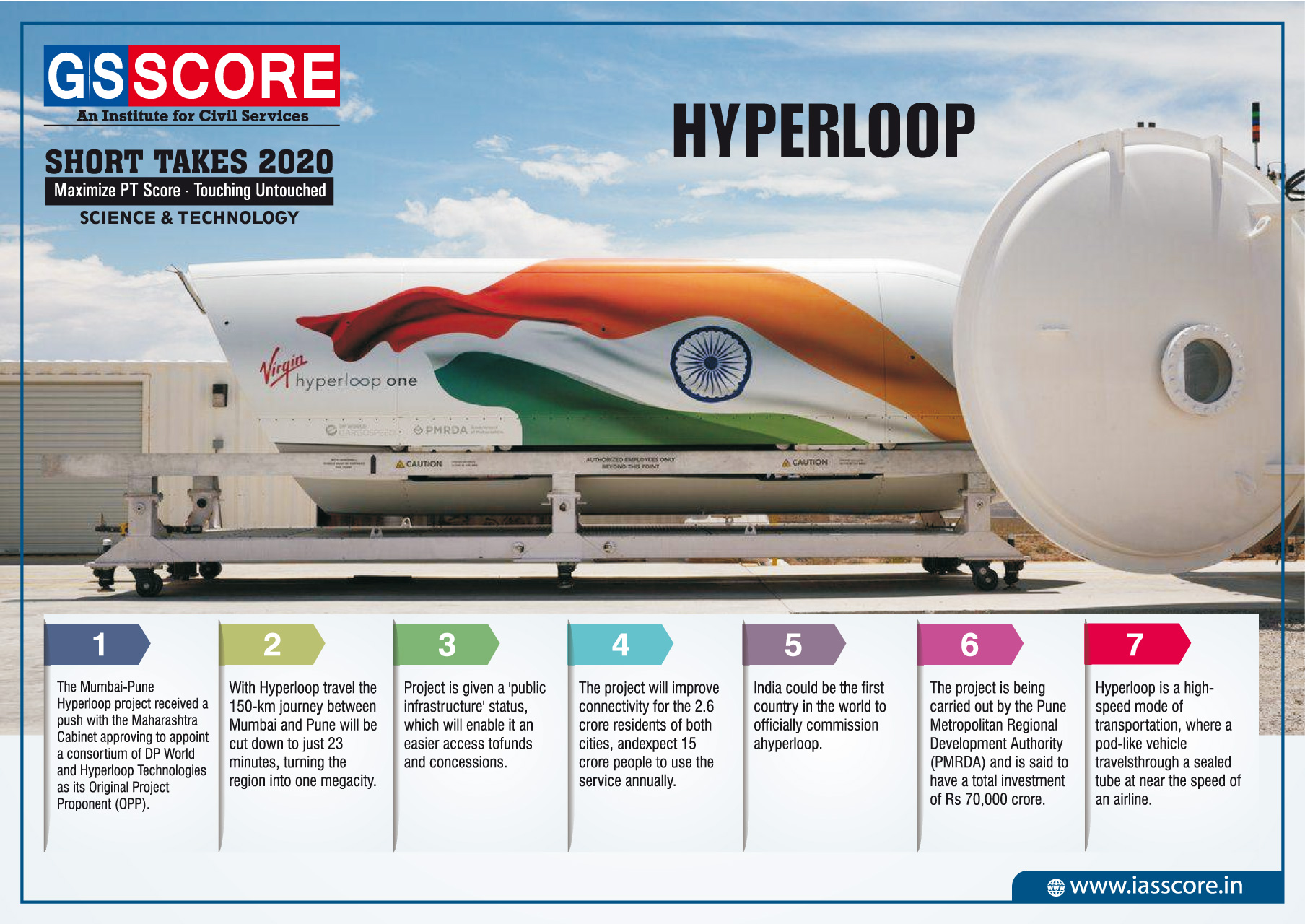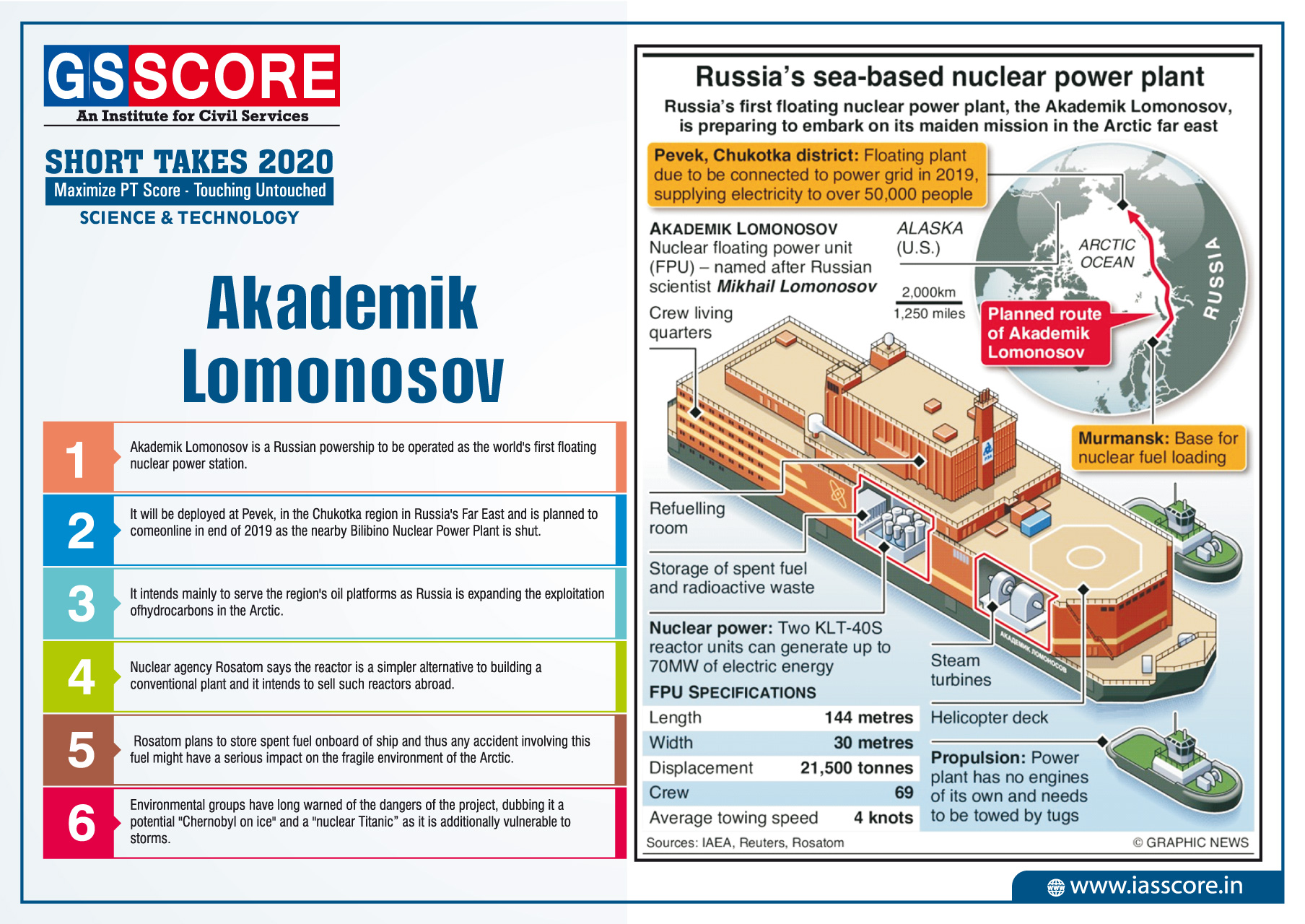Science & Technology: Space Agencies
National Space Agencies
1. Indian Space Research Organization (ISRO)
- The Indian Space Research Organization (ISRO) is the pioneer space exploration agency of the Government of India, headquartered at Bengaluru. ISRO was formed in 1969 with a vision to develop and harness space technology in national development, while pursuing planetary exploration and space science research. ISRO replaced its predecessor, INCOSPAR (Indian National Committee for Space Research), established in 1962 by India’s first Prime Minister Pt. Jawaharlal Nehru and scientist Vikram Sarabhai, considered amongst the founding fathers of Indian space program.
- ISRO, by successfully demonstrating its unique and cost-effective technologies, has gained place among the elite space agencies in the world over the years. The first Indian satellite, Aryabhata, was built by the ISRO and launched with the help of the Soviet Union on April 19, 1975. The year 1980 marked the launch of Rohini, which was the first satellite to be successfully placed in the orbit by SLV-3, an Indian made launch vehicle.
- Recent Missions- Chandrayaan, Gaganyaan-2, Mangalyaan etc.
2. Vikram Sarabhai Space Centre (VSSC)
- The VSSC at Thiruvananthapuram is the largest among the ISRO facilities for the development of satellite launch vehicles and associated technology. The centre had its beginnings as the Thumba Equatorial Rocket Launching Station (TERLS) in 1962. It was renamed in honour of Dr. Vikram Sarabhai, the father of the Indian space program.
- November 21, 1963 marked India’s first venture into space, with the launch of a two-stage Nike Apache sounding rocket from TERLS. The first rockets launched were built in United States.
- The Vikram Sarabhai Space Centre is one of the main research and development establishments within ISRO. VSSC is an entirely indigenous facility working on the development of sounding rockets, the Rohini and Menaka launchers, and the Augmented Satellite Launch Vehicle (ASLV), Polar Satellite Launch Vehicle (PSLV), Geosynchronous Satellite Launch Vehicle (GSLV) and GSLV Mk III families of launch vehicles.
- The VSSC pursues research and development in the fields of aeronautics, avionics, composites, computer and information technology, control guidance and simulation, launch vehicle design, mechanical engineering, mechanisms vehicle integration and testing, propellants polymers and materials, propulsion propellants and space ordnance, and systems reliability.
- Current focus of VSSC is on the (GSLV), the GSLV Mk III and the Reusable Launch Vehicle- Technology Demonstrator (RLV-TD).
- VSSC also has programs focused on applications of space technology including village resource centres, telemedicine, tele-education, disaster management support and outreach through Direct To Home television broadcast.
3. ISRO Satellite Centre (ISAC)
- The ISRO Satellite Centre (ISAC) is the leading centre of ISRO for design, development, fabrication and testing of all Indian made satellites. It was established in the year of 1972 as Indian Scientific Satellite Project (ISSP) in Bengaluru.
- The centre has produced more than 50 satellites including the INSAT series, the Indian Remote Sensing series, as well as the GSAT communication satellites. Organisations under the umbrella of ISAC include the Laboratory for Electro-Optics Systems (LEOS) and the ISRO Satellite Integration and Testing Establishment (ISITE).
- The LEOS is mainly responsible for research, development and production of Sensors for ISRO programmes. The ISITE houses all facilities for building a spacecraft under-one-roof. It provides necessary support for testing sub-systems and spacecraft to meet the requirements of space environment.
4. Satish Dhawan Space Centre (SDSC)/ Sriharikota High Altitude Range (SHAR)
- Satish Dhawan Space Centre (SDSC) or Sriharikota High Altitude Range (SHAR) is a rocket launch centre of ISRO. It is located in Sriharikota in Andhra Pradesh. Features like a good launch azimuth corridor for various missions, nearness to the equator (benefiting eastward launches), and large uninhabited area for a safety zone make it an ideal spaceport.
- The SHAR facility now consists of two launch pads, with the second built in 2005. The second launch pad was used for launches beginning in 2005 and is a universal launch pad, accommodating all of the launch vehicles used by ISRO. The two launch pads will allow multiple launches in a single year, which was not possible earlier.
- SHAR will be the main base for the Indian human spaceflight program. A new third launch pad will be built specifically to meet the target of launching a manned space mission by 2017.
5. Liquid Propulsion System Centre (LPSC)
- Liquid Propulsion Systems Centre (LPSC) is the lead Centre for development and realization of earth-to-orbit advanced propulsion stages for Launch Vehicles and also the in-space propulsion systems for Spacecrafts. It is involved in the development of liquid and cryogenic propulsion for launch vehicles and satellites.
- The LPSC activities and facilities are spread across its two campuses viz., LPSC Headquarters and Design Offices and Spacecraft Propulsion Systems Unit.
- LPSC is engaged in development of liquid and cryogenic propulsion stages for launch vehicles and auxiliary propulsion systems for both launch vehicles and satellites. Activities related to liquid propulsion stages, cryogenic propulsion stages and control systems for launch vehicles and spacecraft is done at Thiruvananthapuram. Precision fabrication facilities, development of transducers and integration of satellite propulsion systems are carried out at Bangalore. The developmental and flight tests along with assembly and integration are done at ISRO Propulsion Complex, Mahendragiri in Tamil Nadu.
6. Space Applications Centre (SAC)
- The SAC focuses on the design of space-borne instruments for ISRO missions and development and operationalisation of applications of space technology for societal benefits. It is engaged in the development of pay loads for communication, broadcasting, navigation, disaster monitoring, meteorology, oceanography, environment monitoring and natural resources survey.
- This includes research and development of on-board systems, ground systems and end user equipment hardware and software. Some of the achievements of the Space Applications Centre include development of communication and meteorological payloads for INSAT satellites, optical and microwave payloads for IRS satellites.
- SAC provides its infrastructure to conduct training courses to the students of the Center for Space Science and Technology Education in Asia and The Pacific (CSSTEAP). SAC has three campuses, two of which are located at Ahmedabad and one at Delhi.
7. Antrix Corporation Limited
- Antrix Corporation Limited (ACL) is a wholly owned Government of India Company, under the administrative control of Department of Space (DOS). It is the apex marketing agency under DOS with access to resources of DOS as well as Indian space industries.
- Antrix promotes and commercially markets the products and services emanating from the Indian Space Programme. In the year 2008, the Company was awarded ‘MINIRATNA’ status. The current business activities of Antrix are as follows:
- Provisioning of communication satellite transponders to various users,
- Providing launch services for customer satellites,
- Marketing of data from Indian and foreign remote sensing satellites,
- Building and marketing of satellites as well as satellite sub-systems,
- Establishing ground infrastructure for space applications, and
- Mission support services for satellites.
International Space Organizations
1. National Aeronautics and Space Administration (NASA)
- NASA was established in 1958, succeeding the National Advisory Committee for Aeronautics (NACA). The new agency was to have a distinctly civilian orientation, encouraging peaceful applications in space science.
- Since its establishment, most US space exploration efforts have been led by NASA, including the Apollo Moon landing missions, the Skylab space station, and later the Space Shuttle.
- NASA is supporting the International Space Station and is overseeing the development of the Orion Multi-Purpose Crew Vehicle, the Space Launch System and Commercial Crew vehicles.
- The agency is also responsible for the Launch Services Program which provides oversight of launch operations and countdown management for uncrewed NASA launches.
- Current Missions- Juno, Curiosity, Cassini-Huygens, Dawn, Mars 2020 Rover, Kepler Space Telescope, New Horizon, James Webb Space Telescope.
2. ROSCOSMOS (Russian Space Agency)
- ROSCOSMOS is a State Corporation that was established in August 2015 to oversee and implement a comprehensive reform of the Russian space industry.
- State Space Corporation ROSCOSMOS ensures the implementation of the Russian government’s space program and its legal regulation. ROSCOSMOS is also placing orders for the development, manufacture and supply of space equipment and space infrastructure objects.
- The state corporation is also responsible for international space cooperation and tasked with setting the stage for the future use of results of space activities in the social and economic development of Russia.
3. Japan Aerospace Exploration Agency (JAXA)
- The Japan Aerospace Exploration Agency (JAXA) was born through the merger of three institutions, namely the Institute of Space and Astronautical Science (ISAS), the National Aerospace Laboratory of Japan (NAL) and the National Space Development Agency of Japan (NASDA). It was designated as a core performance agency to support the Japanese government's overall aerospace development and utilization. JAXA, therefore, can conduct integrated operations from basic research and development, to utilization.
- Missions- Development and Operation Transportation Systems Linking Ground and Space, Utilizing Space Through Satellites, Space Tracking and Communications Center, Human Space Activities / Utilization of the Space Environment, Research on Space Science, Research on Aeronautical Technology, and Fundamental Technology Research.
4. China National Space Administration
- China National Space Administration is the national space agency of China. It is responsible for the national space program and for planning and development of space activities.
- Founded in 1993.
- Recent Missions- Chinese Lunar Exploration Programme, Mars Global Remote Sensing Orbitor and Long March 9
Space Terminologies
1) Apogee: It is a point on the orbit where vertical distance of the satellite from the Earth’s surface is maximum. The maximum distance of the satellite from Earth’s surface is also called apogee of the orbit of the satellite.
2) Perigee: It is a point on the orbit where vertical distance of the satellite from the Earth’s surface is smallest. The smallest distance of the satellite from the Earth’s surface is also called perigee of the orbit of the satellite.
3) Inclination: The angle between the plane of orbit of the satellite and plane of the equator of Earth is called inclination of the orbit.
TYPES OF ORBITS
1) Polar Orbits – A polar orbit is one in which a satellite passes above or nearly above both poles of the body being orbited (usually a planet such as the Earth) on each revolution.
– These orbits have an inclination near 90 degrees. This allows the satellite to see virtually every part of the Earth as the Earth rotates underneath it. The important features of the satellites revolving in polar orbits are as follows:
- A satellite in a polar orbit will pass over the equator at a different longitude on each of its orbits.
- It takes approximately 90 minutes for the satellite to complete one orbit.
– These satellites have many uses like measuring ozone concentrations in the stratosphere or measuring temperatures in the atmosphere; earth mapping and observation; reconnaissance; study of weather etc.
2) Sun Synchronous Orbits – A satellite whose time period is such that it makes exactly an integral number of revolutions (usually 13, 14 or 15) around earth in 24 hours. After passing over a certain place on Earth, next day it will again pass over the same place at the same time of day.
– While Earth spins one rotation, relative to sun in 24 hours, the satellite makes an accurately integral number of revolutions. Thus, satellite will be able to look at that place and photograph it on consecutive days in identical illumination, Sun being in the same position relative to that place. Such an orbit is called a sun-synchronous orbit & the satellite moving in this orbit is called a sun-synchronous satellite. The important features of the satellites moving in the sun synchronous orbits are as follows:
- These orbits allow a satellite to pass over a section of the Earth at the same time of day. Since there are 365 days in a year and 360° in a circle, it means that the satellite has to shift its orbit by approximately 1° per day.
- These satellites orbit at an altitude between 700 to 800 km.
– These satellites are very important for military and remote sensing purposes.
3) Geosynchronous Orbits/ Geostationary Orbit – The satellites in these orbits circle the Earth at the same rate as the Earth spins. The orbit of such satellite is in the plane of equator, i.e. its inclination is 0o, at a height of about 36,000 km above the equator and keeps this distance constant.
– Thus, it is a circular orbit. Hence, relative to any location on earth, the position of the satellite is stationary. This orbit is called geo-stationary orbit. A satellite revolving in this orbit is called a geo-stationary satellite. The important features of the satellites moving in the geostationary orbits are as follows:
- Geosynchronous orbits allow the satellite to observe almost a full hemisphere of the Earth. These satellites are used to study large scale phenomenon such as hurricanes, or cyclones.
- These orbits are also used for communication satellites. The disadvantage of this type of orbit is that since these satellites are very far away, they have poor resolution. The other disadvantage is that these satellites have trouble monitoring activities near the poles.
4) Low Earth Orbit (LEO) – The Low Earth Orbit extends from 200 km. to 1200 km. It means that it is relatively low in altitude, although well above anything that a conventional aircraft can reach. However LEO is still very close to the Earth, especially when compared to other forms of satellite orbit including geostationary orbit. The important features of the Low Earth Orbit are as follows:
– Orbit times are much less than for many other forms of orbit.
– Less energy is expended placing the satellites in LEO than higher orbits.
– The lower orbit means the satellite and user are closer together and therefore path losses a less than for other orbits such as GEO.
– LEO satellites have shorter life spans than others
– Some speed reduction may be experienced as a result of friction from the low, but measurable levels of gasses, especially at lower altitudes.
– Radiation levels are lower than experienced at higher altitudes.
- A variety of different types of satellite use the LEO orbit levels. These include different types and applications including communications satellites, earth monitoring satellites etc.
- The International Space Station is in an LEO that varies between 320 km. (199 miles) and 400 km. (249 miles) above the Earth’s surface.
Space Debris in LEO – Apart from the general congestion experienced in Low Earth Orbit, the situation is made much worse by the general level of space debris that exists. There is a real and growing risk of collision and major damage – any collisions themselves are likely to create further space debris.
5) Medium Earth Orbits (MEO) – They are in between LEO and geostationary orbits & operate about 8,000-20,000 km. above the earth. They are placed in an elliptical orbit.
– The orbit is basically used for communication satellites.
– Examples include GPS and Global Communication and Orblink.
LAUNCH VEHICLES
1) ASLV:
- Augmented Satellite Launch Vehicle (ASLV) was developed to act as a low cost intermediate vehicle to demonstrate and validate critical technologies.
- With a lift off weight of 40 tonnes, the 23.8 m tall ASLV was configured as a 5 stage, all-solid propellant vehicle, with a mission of orbiting 150 kg class satellites into 400 km circular orbits.
- The strap-on stage consisted of 2 identical 1m diameter solid propellant motors, Under the ASLV programme 4 developmental flights were conducted.
- ASLV provided valuable inputs for further development.
2) PSLV
- The Polar Satellite Launch Vehicle, usually known as PSLV is the 1st operational launch vehicle of ISRO.
- PSLV is capable of launching 1600 kg satellites in 620 km. sun-synchronous polar orbit and 1050 kg. satellite in Geo-synchronous Transfer Orbit (GTO).
- In the standard configuration, it measures 44.4 m. tall, with a lift off weight of 295 tonnes.
- PSLV has 4 stages using solid and liquid propulsion systems alternately. The 1st stage is one of the largest solid propellant boosters in the world and carries 139 tonnes of propellant.
- A cluster of 6 strap-ons attached to the 1st stage motor, 4 of which are ignited on the ground and 2 are air-lit.
- The reliability rate of PSLV has been superb. With its variant configurations, PSLV has proved its multi-payload, multi-mission capability in a single launch and its Geosynchronous launch capability.
3) GSLV Mk I & II
- Geosynchronous Satellite Launch Vehicle (GSLV)-Mark I&II , is capable of placing INSAT-II class of satellites (2000 – 2,500 kg) into Geosynchronous Transfer Orbit (GTO). GSLV is a 3 stage vehicle GSLV is 49 m tall, with 4141 lift off weight.
- It has a maximum diameter of 3.4 m at the payload fairing. 1st stage comprises S125 solid booster with four liquid (L40) strap-ons. 2nd stage (GS2) is liquid engine and the 3rd stage (GS3) is a cryo stage. The vehicle develops a lift off thrust of 6573 km.
4) GSLV Mk III
- The GSLV-III or Geosynchronous Satellite Launch Vehicle Mark III is a launch vehicle currently under development by the Indian Space Research Organization.
- GSLV Mk III is conceived and designed to make ISRO fully self reliant in launching heavier communication satellites of INSAT-4 class, which weigh 4500 to 5000 kg.
- It would also enhance the capability of the country to be a competitive player in the multimillion dollar commercial launch market.
- The vehicle envisages multi-mission launch capability for GTO, LEO, Polar and intermediate circular orbits.
5) Reusable Launch Vehicle
- A reusable launch system (or reusable launch vehicle, RLV) is a launch system which is capable of launching a launch vehicle into space more than once. This contrasts with expendable launch systems, where each launch vehicle is launched once and then discarded.
- Reusable Launch Vehicle-Technology Demonstration (RLV-TD) Programme of ISRO is planned as a series of technology demonstration missions that have been considered as a first step towards realising a Two Stage To Orbit (TSTO) fully reusable vehicle.
- A Winged RLV-TD has been configured to act as a flying test bed to evaluate various technologies using air breathing propulsion. These technologies will be developed in phases through a series of experimental flights.
- Hypersonic experiment (HEX) flight, the first in the series of experimental flights, will be followed by the Landing experiment (LEX), Return flight experiment (REX) and Scramjet Propulsion experiment (SPEX).
- RLV-TD HEX1 is planned to demonstrate the hypersonic aerothermo dynamic characterisation of winged re-entry body, autonomous mission management to land at a specified location and characterisation of hot structures.
- Application of these technologies would bring down the launch cost by a factor of 10.
“Rare Diseases Day”
Context
World Rare Disease Day is observed every year on the last day of February. This year, February 29, the rarest of days, is marked as the International Rare Disease Day.
About
- Rare Disease Day takes place on the last day of February each year. The main objective of Rare Disease Day is to raise awarenessamongst the general public and decision-makers about rare diseases and their impact on patients' lives.
- The first Rare Disease Day was celebrated in 2008 on 29 February, a ‘rare’ date that happens only once every four years.
- Ever since then, Rare Disease Day has taken place on the last day of February, a month is known for having a ‘rare’ number of days.
What is Rare Disease?
- A rare disease also referred to as an orphan disease, is any disease that affects a small percentage of the population.
- Over 300 million people are living with one or more of over 6,000 identified rare diseases around the world.
- Over 6000 rare diseases are characterised by a broad diversity of disorders and symptoms that vary not only from disease to disease but also from patient to patient suffering from the same disease.
- Relatively common symptoms can hide underlying rare diseases leading to misdiagnosis and delaying treatment.
- Quintessentially disabling, the patients quality of life is affected by the lack or loss of autonomy due to the chronic, progressive, degenerative, and frequently life-threatening aspects of the disease.
- Each rare disease may only affect a handful of people, scattered around the world, but taken together with the number of people directly affected is equivalent to the population of the world’s third-largest country.
|
Items for Box:
|
What causes rare diseases?
- There are many different causes of rare diseases. The majority are thought to be genetic, directly caused by changes in genes or chromosomes.
- In some cases, genetic changes that cause disease are passed from one generation to the next.
- In other cases, they occur randomly in a person who is the first in a family to be diagnosed.
- Many rare diseases, including infections, some rare cancers, and some autoimmune diseases, are not inherited.
- The most common rare diseases identified in India are Haemophilia, Thalassemia, Sickle-cell Anaemia, Primary Immuno Deficiency, Lysosomal Storage Disorders such as Gaucher Disease, Fabry Disease, Hunter Syndrome and Pompe’s Disease.
SUTRA PIC
Context
The government recently unveiled SUTRA PIC programme to research on ‘indigenous’ cows.
About:
- SUTRA PIC:It stands for Scientific Utilization Through Research Augmentation-Prime Products from Indigenous Cows.
- Funding:The initiative is led by the Department of Science and Technology (DST). It is to be funded by multiple scientific ministries.
- Partners: Department of Biotechnology, CSIR, the Ministry for AYUSH,Indian Council of Medical Research (ICMR), among others.
- Objective: The initiative aims to perform scientific research on complete characterization of milk and milk products derived from Indian indigenous cows.
- It will implement scientific research on nutritional and therapeutic properties of curd and ghee prepared from indigenous breeds of cows by traditional methods.
- It also aims to develop standards for traditionally processed dairy productsof Indian-origin cow
- Themes:
- Uniqueness of Indigenous Cows
- Prime-products from Indigenous Cows for Medicine and Health
- Prime-products from Indigenous Cows for Agricultural Applications
- Prime-products from Indigenous Cows for Food and Nutrition
- Prime-products from indigenous cows-based utility items
Livestock census
- According to the 20thlivestock census, livestock population in India rises 4.6% to nearly 536 million.
- The indigenous cattle has decreased by 8.94%.
- The exotic/crossbred population has increasedby 20.18%.
- Reasons for decline of indigenous breed:Cross-breeding with exotic breeds; being economically less viable; losing utility; reduction in herd size; large-scale mechanisation of agricultural operation.
- Implications of decline in indigenous cattle:
- Due to continuous fall in productivity, indigenous breeds of cattlehave become
- Farmers find other animals such as buffaloes, goats and sheep more productive.
- Unlike cows, if they become unproductive, they can be sold and slaughteredfor further processing.
- Fall in indigenous breeds can have long term health and environmental impact;because the milk of indigenous breed has higher nutritional value than that of crossbreeds.
- There is also danger of losing these indigenous breeds.
- This has caused disruption in cattle economy which may adversely impact farm incomes also.
“Spike Protein” of 2019-nCoV”
Context
Researchers in the United States have unveiled the structure of the “spike protein” of 2019-nCoV, the virus behind the current coronavirus disease outbreak.
About:
- Coronaviruses are a family of viruses that cause illnesses ranging from the common cold to more severe diseases such as severe acute respiratory syndrome (SARS)and the Middle East respiratory syndrome (MERS).
- The World Health Organization (WHO) has declared the virus a global health emergency. Also, the WHO announcedan official name for the disease- coronavirus disease 2019, abbreviated as COVID-19.
- In COVID-19, ‘CO’ stands for ‘corona,’ ‘VI’ for ‘virus,’ and ‘D’ for the disease. Formerly, this disease was referred to as “2019 novel coronavirus” or “2019-nCoV.”
What is a spike protein?
- A viral spike protein is like a key that “unlocks the door” to gain access to the cells of a specific host — humans, in this case.
- The researchers defined the structure of 2019-nCoV’s spike protein using a technique called cryogenic electron microscopy, or “Cryo-EM”.
- This involves cooling the protein to below -150 degree Celsius so that it crystallises and then its structure can be determined with near-atomic resolution.
Another discovery:
- They also identified the “keyhole”, the host cell receptor: it is a human protein called angiotensin-converting enzyme 2 (ACE2).
- This is the same human receptor protein targeted by the earlier SARS coronavirus.
- But, disturbingly, the researchers found that 2019-nCoV binds to ACE2 with much higher affinity (10-20 times higher!) than SARS.
So what about a vaccine?
- Both viruses attack the same protein on human cells, and the already available antibodies against SARS-CoV would work against 2019-nCoV.
- This means a stronger solution to this problem is still far away.
- Globally, the competition is heating up to hunt for the best anti-2019-nCoV vaccine.
- The earliest clinical trials to test a suitable vaccine will not be available until several months or even a year after a candidate vaccine is identified, and the global coronavirus outbreak may well be controlled by then.
Significance of the discovery:
- Knowing the structure of the virus’s spike protein gives us crucial information about exactly how the virus infects host cells.
- The discovery of the 2019-nCoV spike proteinstructure, therefore, represents both good news and bad.
- The good news is now we know what it looks like, it will be easier to find the most suitable weapon against the virus.
- The bad news is the enemy is much stronger than we thought, and our current ammunition depot doesn't have anything efficient against it.
ARTIFICIAL INTELLIGENCE IN AGRICULTURE

Crypto currencies to be banned

Cyber security - Agent Smith

Hyperloop

Akademik Lomonosov


